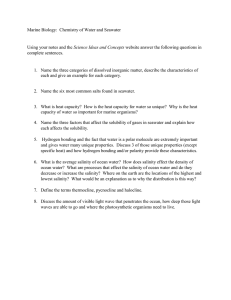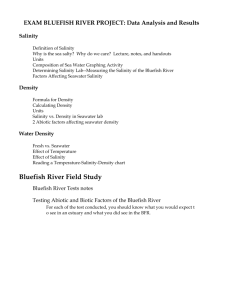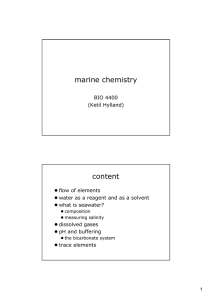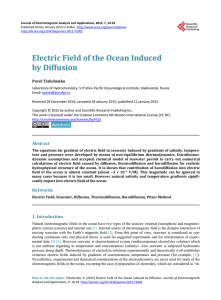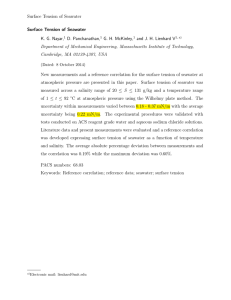Influence of salinity on biomass production, total phenols, damage
advertisement
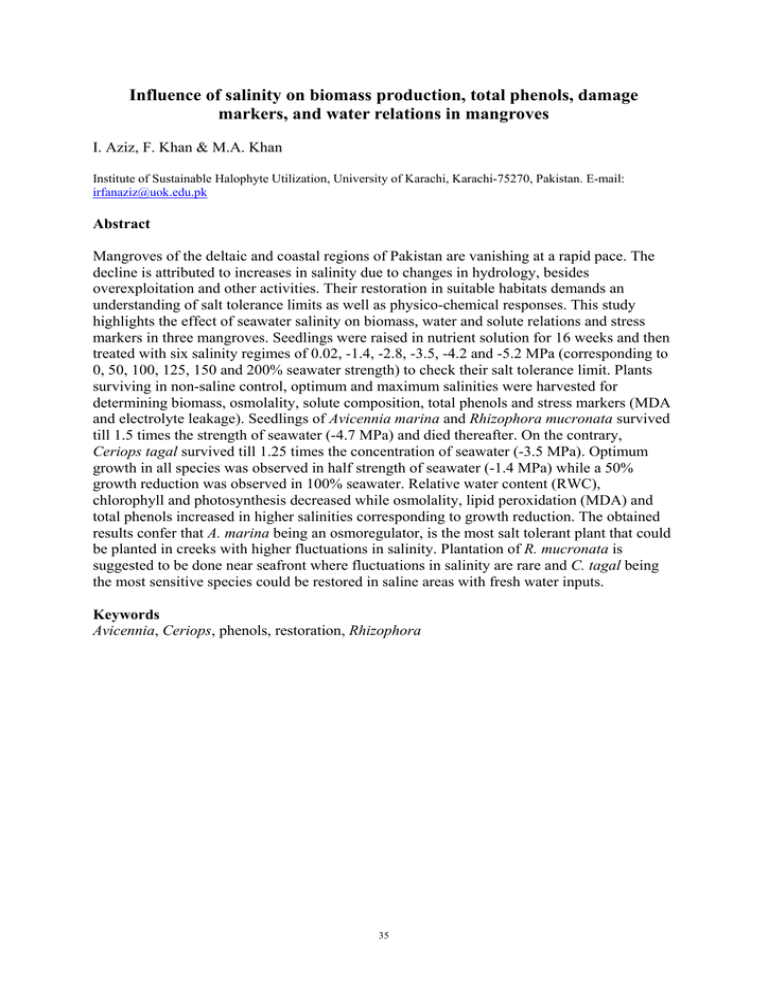
Influence of salinity on biomass production, total phenols, damage markers, and water relations in mangroves I. Aziz, F. Khan & M.A. Khan Institute of Sustainable Halophyte Utilization, University of Karachi, Karachi-75270, Pakistan. E-mail: irfanaziz@uok.edu.pk Abstract Mangroves of the deltaic and coastal regions of Pakistan are vanishing at a rapid pace. The decline is attributed to increases in salinity due to changes in hydrology, besides overexploitation and other activities. Their restoration in suitable habitats demands an understanding of salt tolerance limits as well as physico-chemical responses. This study highlights the effect of seawater salinity on biomass, water and solute relations and stress markers in three mangroves. Seedlings were raised in nutrient solution for 16 weeks and then treated with six salinity regimes of 0.02, -1.4, -2.8, -3.5, -4.2 and -5.2 MPa (corresponding to 0, 50, 100, 125, 150 and 200% seawater strength) to check their salt tolerance limit. Plants surviving in non-saline control, optimum and maximum salinities were harvested for determining biomass, osmolality, solute composition, total phenols and stress markers (MDA and electrolyte leakage). Seedlings of Avicennia marina and Rhizophora mucronata survived till 1.5 times the strength of seawater (-4.7 MPa) and died thereafter. On the contrary, Ceriops tagal survived till 1.25 times the concentration of seawater (-3.5 MPa). Optimum growth in all species was observed in half strength of seawater (-1.4 MPa) while a 50% growth reduction was observed in 100% seawater. Relative water content (RWC), chlorophyll and photosynthesis decreased while osmolality, lipid peroxidation (MDA) and total phenols increased in higher salinities corresponding to growth reduction. The obtained results confer that A. marina being an osmoregulator, is the most salt tolerant plant that could be planted in creeks with higher fluctuations in salinity. Plantation of R. mucronata is suggested to be done near seafront where fluctuations in salinity are rare and C. tagal being the most sensitive species could be restored in saline areas with fresh water inputs. Keywords Avicennia, Ceriops, phenols, restoration, Rhizophora 35
